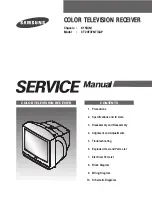
25
Your radio will display a message at the end of the charging process. If
the charging is successful, or if the batteries are nearly fully charged, the
display will show "Battery Full".
If the charge process stops after only a short while this may be due to
a faulty battery. In this case the display will show "Battery Fail" and the
battery number 1-4, corresponding to the numbering printed inside the
battery cover.
If this happens, try charging the batteries a second time by removing and
reconnecting the AC power adaptor. If the message is repeated, then it is
likely that the batteries are old and should be replaced.
If you use the radio powered from the batteries, the charge/low battery
indicator light will be off until the batteries are exhausted. The charge/
low battery indicator light will then show red for a short while before the
radio switches itself off. It does this in order that the batteries are not
excessively discharged. This would otherwise damage the batteries and
shorten their life.
If you use the radio powered from the mains with rechargeable batteries
fi
tted, the charging process is suspended until you switch off the radio.
When you switch off the radio using its On/Off button charging will then
resume. If the batteries have already been charged then they will only
charge for a few more minutes before the charge indicator stops
fl
ashing.
If you only listen to your radio for short periods, you do not need to
connect your radio to the mains to charge the batteries every time that
you use it. However, if the radio is not to be used for a few weeks, then
we recommend that the batteries are fully charged (charge light shows
steady green) before the radio is put to one side.
If you intend not to use your radio for some months, then we recommend
that the batteries are removed and put away, keeping them in a cool
place out of reach of children, away from moisture and such that no metal
object can contact the battery terminals.
With care, rechargeable batteries can last a long time and can operate for
many hundreds of charge and discharge cycles. When your rechargeable
batteries can no longer power your radio adequately, please dispose of
them responsibly using a local battery recycling facility.
To avoid danger and risk of injury, please follow
these guide lines
Improper use of batteries may result in leakage of
fl
uid, overheating
or explosion. Battery
fl
uid is corrosive and may also be toxic. Battery
fl
uid can cause skin burns, can damage the eyes, and can be harmful if
swallowed.
1. Keep batteries out of the reach of children.
2. Do not heat, open, puncture, mutilate or dispose of batteries by
burning.
3. Do not mix different battery types or old and new batteries. Always
replace all the batteries at the same time.
4. Do not carry or store batteries such that metal objects may contact
the end caps.
5. Remove batteries from the radio if they are worn out or if you are
storing it for a long time.
6. Remove old or worn out batteries promptly, and recycle or dispose of
them according to the regulations applicable to your location.
7. If a battery does leak, remove all batteries from the product, taking
care to avoid directly touching the leaked
fl
uid. If the
fl
uid contacts
skin or clothes wash with water immediately. Before inserting new
batteries, thoroughly clean the battery compartment with a damp
paper towel, or follow the battery manufacturer’s advice for clean up.



































